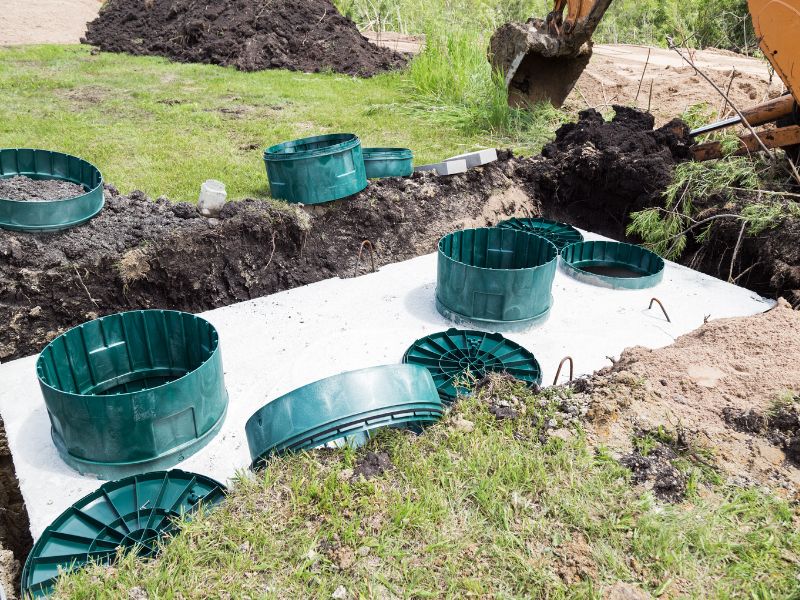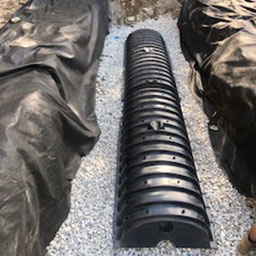Drain Pipe Guide: Top 5 Best Picks for 2024
Introduction
Drain pipes are essential components in any property’s plumbing system. They play a key role in ensuring that wastewater and rainwater are diverted away from your home, protecting your foundation and landscape from potential water damage.
Quick Summary:
– Drain pipes are crucial for diverting water safely.
– Several types of drain pipes exist, including PVC, ABS, HDPE, and corrugated pipes.
– Choosing the right pipe depends on factors like material, cost, application, and durability.
Managing the different types of drain pipes can seem daunting, but understanding the basics can make a significant difference. Whether you’re planning to install a new drainage system or replace an old one, knowing which type of drain pipe best suits your needs is essential.
Read on as we break down the various types of drain pipes, discuss their uses, and provide tips on how to choose the right one for your property.
Types of Drain Pipes
Choosing the right drain pipe can make a big difference in how well your drainage system works. Let’s look at some common types of drain pipes and their uses.
PVC Drain Pipes
PVC (Polyvinyl Chloride) drain pipes are popular for their low cost and ease of use. They are commonly used in DWV (Drain-Waste-Vent) applications, such as carrying wastewater from sinks, toilets, and showers.
- Common Use: Indoor plumbing, sewer lines, and venting.
- Advantages: Lightweight, easy to install, and resistant to corrosion and chemicals.
- Cost: Generally inexpensive, making them a budget-friendly option.
ABS Drain Pipes
ABS (Acrylonitrile Butadiene Styrene) pipes are very similar to PVC but are less common. They are typically used in specific applications where their unique properties are beneficial.
- Common Use: Underground drainage systems and outdoor plumbing.
- Advantages: Stronger and more durable than PVC, especially in cold conditions.
- Cost: Slightly more expensive than PVC but still affordable.
HDPE Drain Pipes
HDPE (High-Density Polyethylene) pipes are the best choice for underground drainage due to their high durability and resistance to corrosion.
- Common Use: Underground water lines, sewer systems, and stormwater management.
- Advantages: Non-reactive, corrosion-resistant, and flexible, making them ideal for harsh environments.
- Cost: More expensive than PVC and ABS but worth the investment for long-term use.
Corrugated Drain Pipes
Corrugated drain pipes are known for their flexibility and are often used in outdoor settings for rainwater drainage.
- Common Use: Extending downspouts, garden drainage, and landscaping.
- Advantages: Flexible, easy to install, and can handle large volumes of water.
- Cost: Generally affordable and available in various lengths and diameters.
Understanding these types of drain pipes and their specific uses can help you make an informed decision. Next, we’ll discuss the factors to consider when choosing the right drain pipe for your needs.
Factors to Consider When Choosing a Drain Pipe
Choosing the right drain pipe involves several important factors. Let’s break them down:
Material
The material of the drain pipe is crucial for its performance and longevity. Here are the most common materials:
- PVC (Polyvinyl Chloride): Widely used due to its low cost and versatility. Commonly found in DWV (drain-waste-vent) applications.
- ABS (Acrylonitrile Butadiene Styrene): Similar to PVC but less common. Often used in specific applications where its properties are beneficial.
- HDPE (High-Density Polyethylene): Best for underground installations. Non-reactive and corrosion-resistant.
- Corrugated: Flexible and ideal for outdoor uses like rainwater drainage.
Cost
Cost is a major consideration, not just for the pipes but also for installation and maintenance.
- Price Range: PVC and corrugated pipes are generally more affordable. ABS and HDPE can be pricier but offer better durability in certain conditions.
- Installation Costs: Labor costs can vary. For example, underground installations with HDPE may require more work and thus be more expensive.
- Maintenance: Consider long-term costs. Some materials may require more frequent maintenance, affecting overall expenses.
Application
Different pipes are suited for different applications:
- Indoor: PVC and ABS are commonly used for indoor plumbing.
- Outdoor: Corrugated pipes are ideal for outdoor drainage systems.
- Underground: HDPE is excellent for underground installations due to its durability.
- Specific Uses: Each material has its strengths. For instance, HDPE is great for areas with corrosive soil.
Durability
Durability is about how long the pipe will last and how well it will resist damage.
- Corrosion Resistance: HDPE and PVC are highly resistant to corrosion, making them ideal for long-term use.
- Chemical Resistance: HDPE is particularly non-reactive, making it suitable for environments with chemical exposure.
- Lifespan: Generally, PVC and HDPE have longer lifespans compared to other materials, often lasting several decades with proper maintenance.
Understanding these factors will help you choose the right drain pipe for your needs. Next, we’ll cover installation and maintenance tips to ensure your system works efficiently.
Installation and Maintenance Tips
Proper installation and maintenance of your drain pipe are key to ensuring it functions effectively and lasts a long time. Let’s break down the steps and best practices to keep your drainage system in top shape.
Installation Steps
- Preparation:
- Plan the Layout: Before you start, plan the layout of your drainage system. Ensure you have all necessary tools and materials.
- Mark the Area: Use spray paint or stakes to mark where the pipes will go. This helps in visualizing the entire setup and avoiding mistakes.
- Cutting:
- Measure Accurately: Measure the lengths you need and mark the cutting points on the pipe.
- Use the Right Tools: For PVC and ABS pipes, a fine-toothed saw or pipe cutter works best. For HDPE, use a special pipe cutter designed for the material.
- Smooth the Edges: After cutting, smooth the edges with sandpaper to remove any burrs.
- Fitting:
- Dry Fit First: Assemble the pieces without glue to ensure everything fits perfectly.
- Apply Adhesive: For PVC and ABS, use the right adhesive and primer. For HDPE, you may need specialized fittings or welding.
- Join the Pipes: Push the pipes together firmly and hold them in place for a few seconds to ensure a strong bond.
Maintenance Practices
- Regular Checks:
- Inspect for Damage: Check your pipes regularly for any signs of wear, cracks, or leaks.
- Look for Obstructions: Ensure there are no blockages in the pipe system.
- Cleaning:
- Flush the System: Use water to flush out any debris. For tougher clogs, a plumbing snake or hydro jet can be effective.
- Use Safe Cleaners: Avoid harsh chemicals. Instead, opt for a mixture of baking soda and vinegar followed by hot water.
- Unclogging:
- Boiling Water: Pour boiling water down the drain to break up minor clogs.
- Plunging: Use a sink plunger for sinks and a toilet plunger for toilets. Plunge vigorously to dislodge the clog.
- Drain Snake: For stubborn clogs, a drain snake can help remove the obstruction.
Common Issues
- Clogs:
- Symptoms: Slow drainage, gurgling sounds, and water backing up.
- Solutions: Regular cleaning, using a drain snake, and avoiding pouring grease down the drain can help prevent clogs.
- Leaks:
- Symptoms: Wet spots around the pipe, water stains, and low water pressure.
- Solutions: Tighten loose fittings, replace damaged sections, and use pipe sealant tape.
- Breaks:
- Symptoms: Sudden loss of water pressure, visible cracks, and flooding.
- Solutions: Replace the broken section immediately. For underground pipes, consider trenchless technology for a less invasive repair.
By following these installation and maintenance tips, you can ensure your drain pipe system remains efficient and durable. Up next, we’ll tackle some frequently asked questions to clear up any lingering doubts you might have.
Frequently Asked Questions about Drain Pipes
What is a drain pipe called?
A drain pipe is often referred to by its material type. Common names include PVC (Polyvinyl Chloride), ABS (Acrylonitrile Butadiene Styrene), and HDPE (High-Density Polyethylene). Each type has its unique qualities and uses, which we discussed earlier.
What is the difference between a sewer pipe and a drain pipe?
Drain pipes and sewer pipes serve different purposes and are located in distinct parts of a plumbing system.
- Drain Pipe: Carries water from sinks, tubs, and washing machines to a central drain. These pipes are usually found inside your home.
- Sewer Pipe: Transports wastewater from the central drain pipe to the municipal sewer system or septic tank. These pipes are typically underground.
Maintenance: Drain pipes can often be maintained by homeowners, but sewer pipes usually require a professional plumber for repairs and maintenance due to their location and complexity.
What is PVC drain pipe used for?
PVC drain pipes are highly versatile and commonly used in various applications:
- Sewer Systems: Ideal for transporting wastewater due to their durability and resistance to chemicals.
- Wastewater Systems: Often used in municipal and residential wastewater systems.
- DWV Applications: Stands for Drain, Waste, and Vent. PVC is perfect for these applications because it’s lightweight, easy to install, and cost-effective.
By understanding these frequently asked questions, you can make more informed decisions about your plumbing needs. Next, let’s explore some real-world applications and case studies to see these pipes in action.
Conclusion
Choosing the right drain pipe is crucial for ensuring your drainage system works efficiently and lasts a long time. Each type of pipe—whether PVC, ABS, HDPE, or corrugated—has its own advantages and specific applications. The right choice depends on factors like material, cost, application, and durability.
Material is a key consideration. PVC and ABS are great for indoor use, while HDPE and corrugated pipes excel in outdoor and underground settings. Cost varies by material and installation complexity, so it’s important to balance upfront expenses with long-term benefits. Application determines the best pipe type; for example, HDPE is excellent for underground systems, while PVC is ideal for DWV applications. Durability ensures your system can withstand environmental factors and last for years.
Marchi Paving Inc. understands the importance of selecting the right drain pipe for your project. With our experience in drainage solutions, we can help you choose and install the best pipe for your needs. Our team uses the latest technology and equipment to ensure efficient and effective drainage systems.
For more information on our drainage solutions, visit our drainage solutions page.
By choosing the right drain pipe and working with experts like us, you can ensure your drainage system is reliable and long-lasting.



